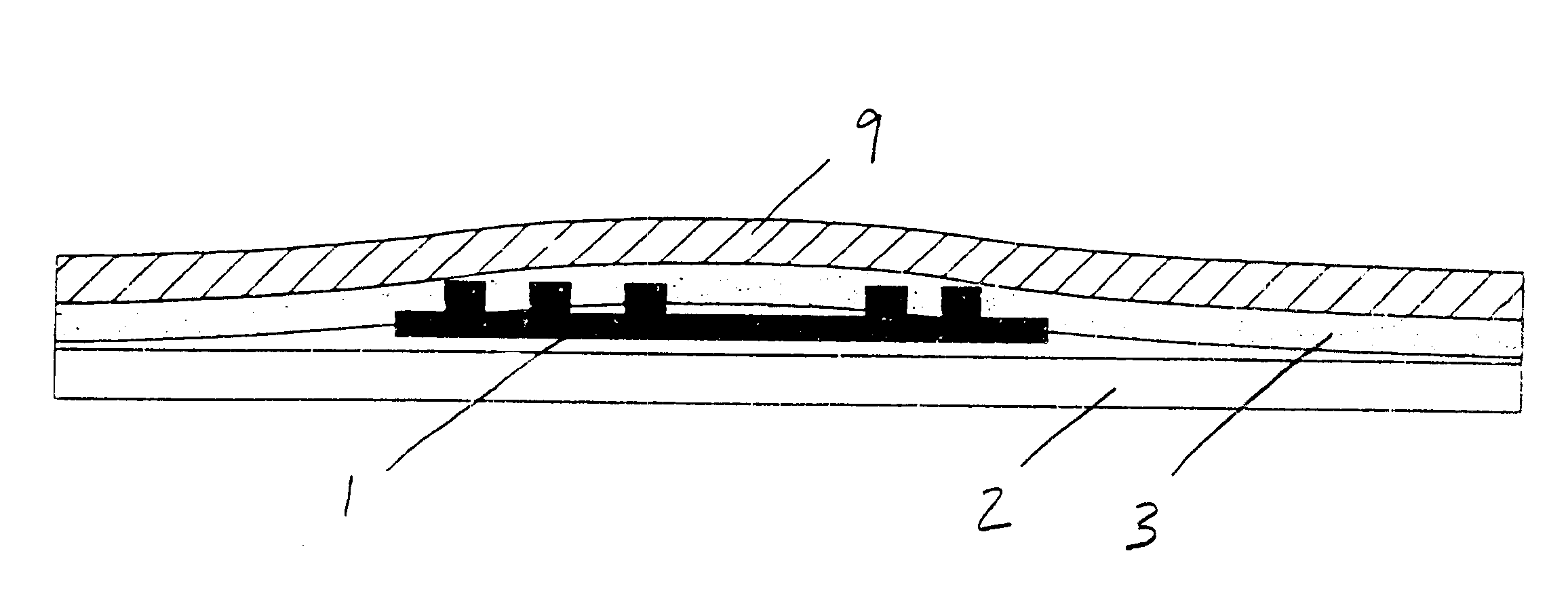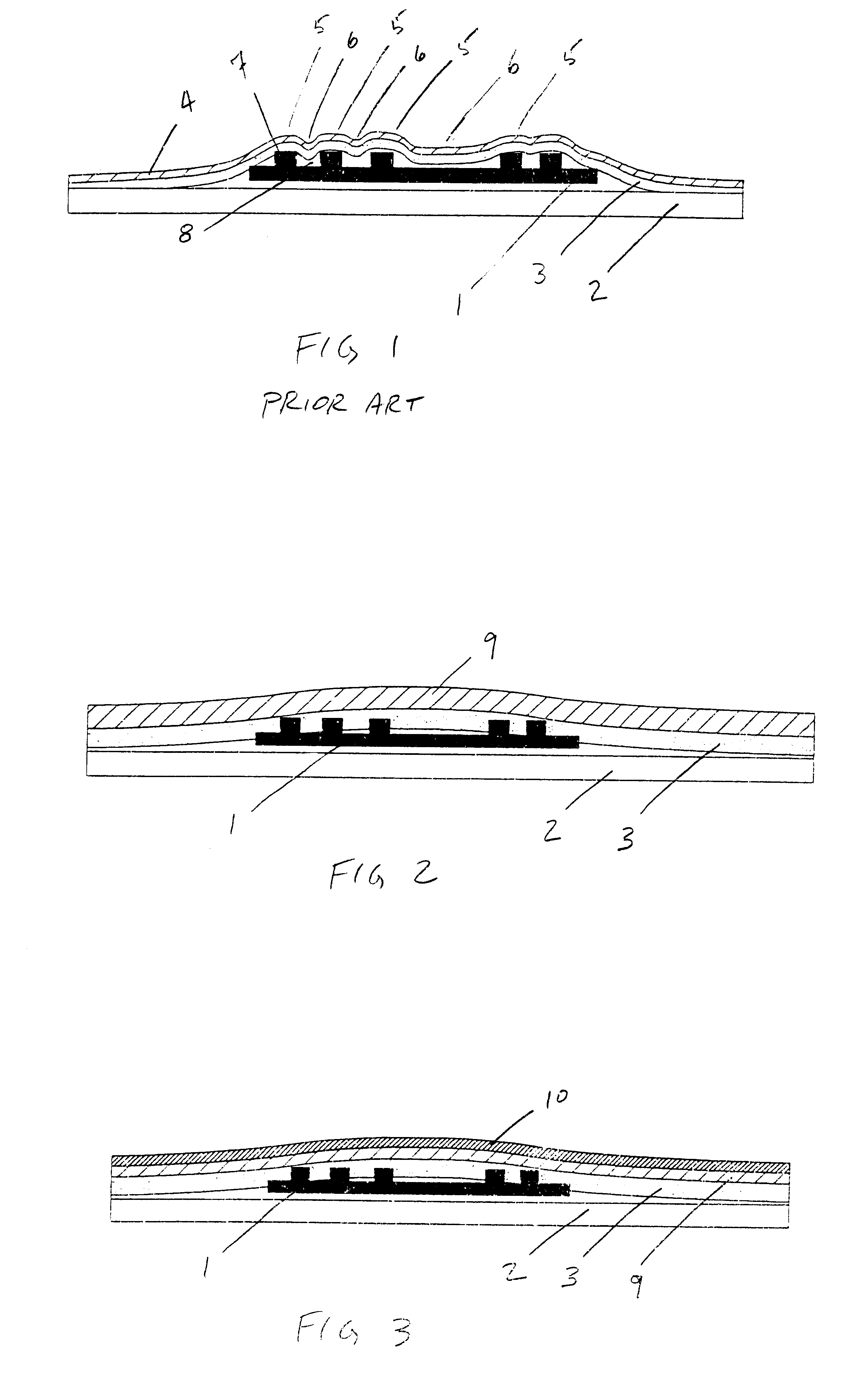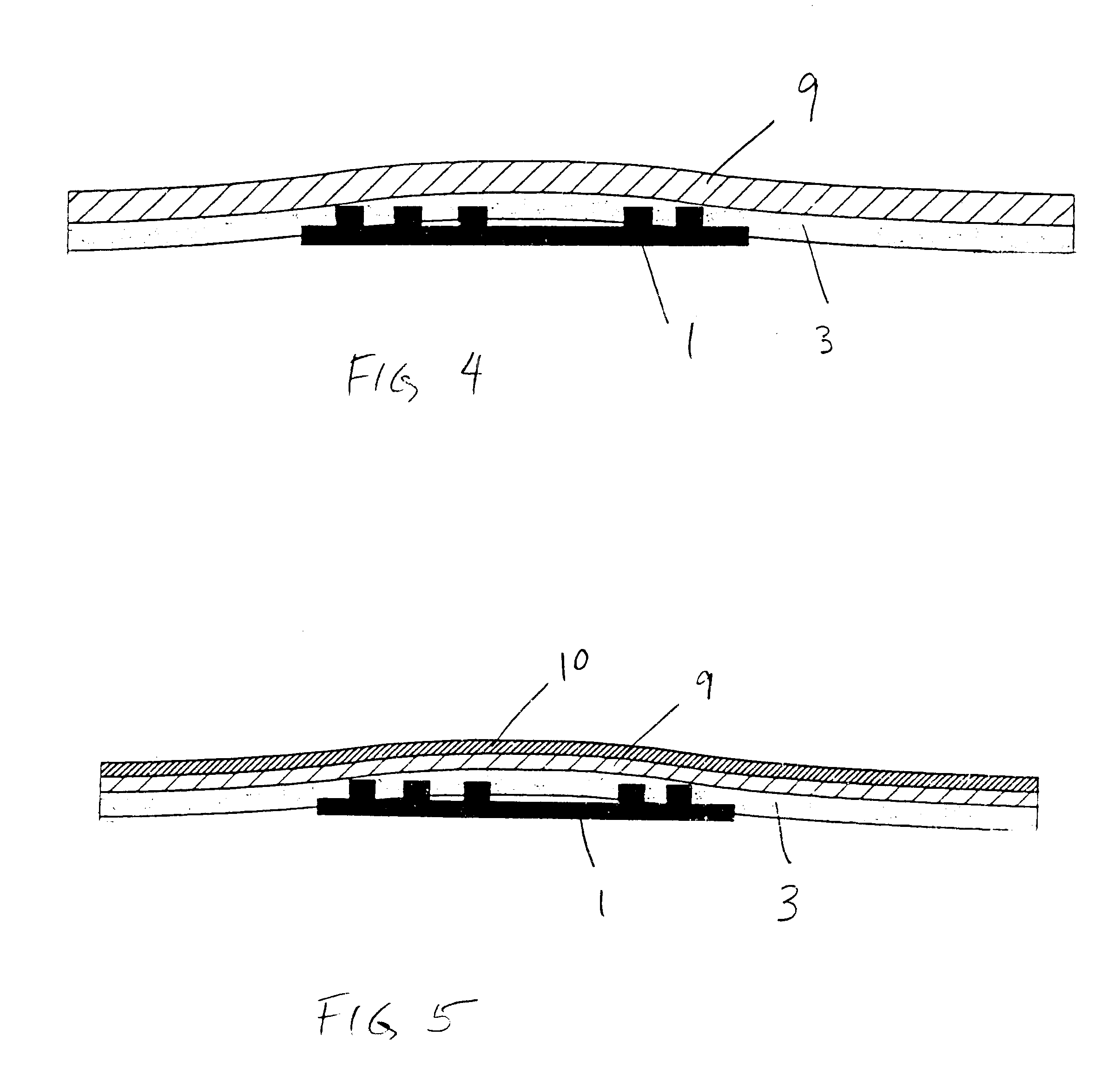Profile corrected label with RFID transponder and method for making same
a technology of rfid transponder and label, applied in the field of labels, can solve the problems of uneven profile physical support and unsupported areas of the label face sheet, and the label's smart label containing an rfid transponder, so as to reduce deformation and bending, and high density and stiffness
- Summary
- Abstract
- Description
- Claims
- Application Information
AI Technical Summary
Benefits of technology
Problems solved by technology
Method used
Image
Examples
Embodiment Construction
As shown on a prior art FIG. 1, past smart labels containing RFID transponders presented an uneven profile for printing on a face sheet. As seen, the presence of the RFID transponder creates distinct supported and unsupported areas of the face sheet, which in turn results in a surface poorly suited for receiving a uniform image created by a thermal printer.
FIG. 2 illustrates a smart label according to the present invention. An RFID transponder 1 is positioned between a liner layer 2 on one side of the RFID transponder 1 an adhesive layer 3 and face sheet 9 on the opposite side of the RFID transponder 1, and from the liner layer 2. The adhesive layer 3 may in one embodiment be thicker in dimension from the prior art adhesive layers. In particular, the first face sheet 9 has a significantly increased thickness and / or rigidity as compared to prior art face sheets. The present invention may also utilize a bending beam construction in one embodiment which results in decreased pressure di...
PUM
 Login to View More
Login to View More Abstract
Description
Claims
Application Information
 Login to View More
Login to View More - R&D
- Intellectual Property
- Life Sciences
- Materials
- Tech Scout
- Unparalleled Data Quality
- Higher Quality Content
- 60% Fewer Hallucinations
Browse by: Latest US Patents, China's latest patents, Technical Efficacy Thesaurus, Application Domain, Technology Topic, Popular Technical Reports.
© 2025 PatSnap. All rights reserved.Legal|Privacy policy|Modern Slavery Act Transparency Statement|Sitemap|About US| Contact US: help@patsnap.com



